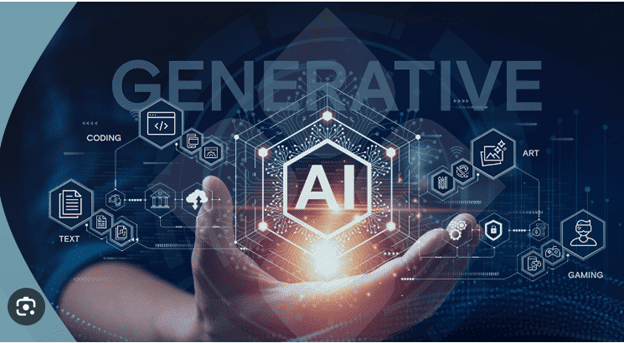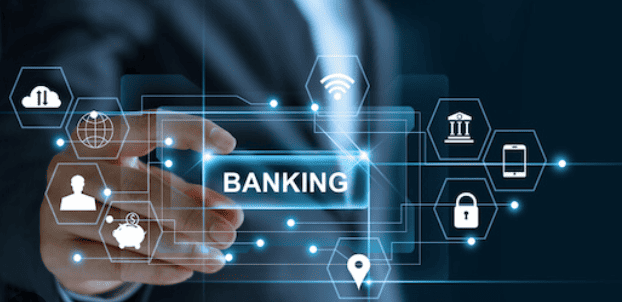
BIP Is “Italy Service Partner Of The Year” For Google Cloud
Google Cloud acknowledges BIP’s excellence in evolving its customers’ cloud services in the Italian market.

Google Cloud acknowledges BIP’s excellence in evolving its customers’ cloud services in the Italian market.

BIP Group, the international consulting company is strengthening its presence in the US with the appointment of Rafael Garrido as Country Leader.

Banking and financial service leaders face insurmountable business challenges that often require care, attention, nuanced thought, and insightful decision making. Data analytics can assist to tackle any business decision that requires prudent action. Whether trying to answer questions, detect trends, allocate capital, or extract insights, without proper data analytics, any decision maker is flying blind.

The US economy got off to a rough start in Q1 from the increases in the benchmark federal funds rate by the Federal Reserve to curb persistent inflation. The approval of another quarter-point interest rate in the May FOMC meeting marked the central bank’s tenth consecutive rate hike in 14 months. The fastest rate-raising cycle in 40 years, unhedged interest rate and market risks, and fear of contagion contributed to the recent collapses of Silicon Valley Bank, Signature Bank, and First Republic Bank. The failure of Silicon Valley Bank had significant ramifications for the tech sector due to the concentration of depositors within the technology and venture capital. More broadly, the banking crisis is having a slow-burn impact on the economy that will reduce credit flow to Main Street, delay investments, and put a brake on the technology investment boom from covid pandemic. The impact is reverberating through the financial system and bank’s operations in the US and beyond. Despite the banking crisis, the Financial Services Industrial (FSI) has seen many Fin Tech innovations introduced in recent years, including blockchain-based cryptocurrencies, feature-rich mobile banking applications, and JP Morgan’s launch in the metaverse in Decentral, successful consumer adoption of Bank of America’s AI-powered chatbot, and increased use of cloud services such as AWS, Azure and GCP for enterprise computing. In addition to the technology investments, banks have undertaken a large portfolio of Change the Bank (CTB) and Run the Bank (RTB) initiatives to improve operational efficiency, reduce costs, stay competitive, and remain compliant with the regulations. Q1 earnings for big banks such as JPMorgan Chase, Bank of America, Citigroup, and Wells Fargo have benefited from the same heightened interest rates that tipped regional banks. However, the strains on the US banks will continue as the interest rate hikes work through the system and market participants, creating headwinds for banks due to a lag in monetary policy impact. This has prompted banks to re-assess their business operations, re-size business portfolios, and optimize technology investments. In the last decade, banks have made sizeable investments in innovative changes and digital transformations with a time horizon of 12 to 24 months or more to bring in results. With technology costs going up, there is not an unlimited amount that banks can spend. Therefore, a shortened timeline for return on investment (ROI) is prioritized before the budget is allocated from the annual planning process. Banks are also trimming and streamlining their information technology spending amid worries about a possible recession later this year. Reining in cloud costs, removing redundant applications, and reducing vendor spend are among the challenging tasks for bank CIOs while ensuring the core banking operation is secure and resilient. Meanwhile federal regulators are considering stricter rules for midsize banks due to recent failures. Tougher capital and liquidity and “stress tests” requirements are being discussed. These rules will target banks with between $100 billion to $250 billion in assets, which at present escape the most onerous capital requirements. The new rules will reverse the 2018 shift by lowering the $250 billion threshold in bank assets for supervision. These added regulatory and compliance requirements will increase the cost of regulatory compliance. As a result, banks may need to continue to prioritize investments and enhance capabilities in risk management and regulatory compliance. With JPMorgan’s takeover of First Republic Bank early May, the trend towards consolidation in the U.S. banking sector is likely to continue. It’s widely expected that capital will become less available as lending standards are tightened. Companies may have to pay up to borrow or struggle to fund new projects. The market dislocation and disruption have served as inflection points for some banks. The same can be said about the technology-induced disruptions and their impact on some banks who will come out as winners or losers, depending on the decisions they make. As US banks continue to face challenges from the recent banking crisis to the impact of interest rate hikes, stricter compliance requirements, and digital transformation. While some banks are struggling to keep up, others are leveraging technology and innovation to stay ahead of the competition. The challenge and success often lie in bank’s ability to adapt to the new normal and achieve a dedicated balance to keep the lights on, grow its business, mitigate regulatory and operational risks, while investing in innovation and technology in these uncertain times. About BIP.Monticello BIP.Monticello, a member of the BIP Group, is a management consulting firm supporting the financial services industry with its expertise in digital transformation, change management, and financial services advisory. Our understanding of the competitive forces reshaping business models in capital markets and digital banking are proven enablers that help our clients drive innovative change programs to be more competitive and gain market share in new and existing businesses. In partnership with Bip.xTech, we collaborate with our clients to infuse the spirit of data-driven organizations and build digital solutions, helping them make their operations more efficient and achieve a competitive advantage in the marketspace.

BIP.Monticello recently attended the ChatGPT and Generative AI for CX: Hype, Reality, What to Know and Do webinar. The webinar showed how advancement in Generative Pre-trained Transformer (GPT) technology can help people working in Customer Experience (CX) roles and the exciting capabilities of OpenAI’s ChatGPT. ChatGPT can engage in conversations and provide answers within the context of what has been discussed. It can communicate in different styles, tones, languages, and formats, depending on how the user prompts it. ChatGPT excels at producing answers that are pithy and understandable. There are several use cases where ChatGPT can improve the productivity of a CX team. Ian Jones, the Head of Strategic Solutions for eGain, commented that “writing content, particularly customer service content, is really hard, and from my experience working with clients, they really struggle.” ChatGPT can quickly produce an answer in the form of an article, an email, a letter, or even a brief chatbot response. It can save CX teams time with basic information gathering and research. However, CX teams will still have to review what ChatGPT generates for content accuracy and relevance. ChatGPT can summarize larger amounts of customer feedback and turn it into valuable insights. CX teams can take user feedback submitted online and ask ChatGPT to analyze the data and summarize actionable points from it. These productivity improvements allow CX teams to do more work with fewer people and focus on more value-added work. Early adopters of generative AI tools should be mindful of their shortcomings. When applying GPT to the use cases mentioned above, it is important to review any content that ChatGPT creates for accuracy. Because of how convincing generative AI responses are, it is easy to believe the answers are 100% true, even when they are not. As a result, there are concerns about misinformation generated by these tools. Additionally, there are privacy concerns with ChatGPT. Although OpenAI has indicated that user searches are private, there was a bug uncovered recently that allowed some users to see titles and chat history from other users. Privacy concerns prompted Italy to temporarily ban ChatGPT for widespread use until OpenAI made necessary safety changes to appease the regulators. In January 2023, only two months after its launch in late November 2022, ChatGPT had 100 million monthly active users. Its adoption is faster than social media platforms like TikTok or Instagram, making it the fastest-growing consumer internet app ever. ChatGPT will continue to develop and become safer with improvements to address privacy and regulatory concerns. Its applications to CX and other user cases will improve productivity and foster innovations. As Ashu Roy, CEO of eGain, commented, “With ChatGPT, it seems like we are ever so close to the possibility of potentially augmenting a significant amount of work that customer experience Associates are doing on the front lines, as well as automating significant parts of customer experience interactions where it makes sense.” About BIP.Monticello BIP.Monticello, a member of the BIP Group, is a management consulting firm supporting the financial services industry with its expertise in digital transformation, change management, and financial services advisory. Our understanding of the competitive forces reshaping business models in capital markets and digital banking are proven enablers that help our clients drive innovative change programs to be more competitive and gain market share in new and existing businesses. In partnership with Bip.xTech, we collaborate with our clients to infuse the spirit of data-driven organizations and build digital solutions in areas of AI, Natural Language Processing (NLP) and Machine Learning, helping them make their operations more efficient and achieve a competitive advantage in their Digital Transformation journeys.

“Artificial Intelligence is more profound than fire, electricity, or the internet” -Sundar Pichai, Chief Executive Officer of Alphabet Background on AI/ML and Software Testing Trends Artificial Intelligence (AI) and Machine Learning (ML) have gained significant attention due to their disruptive potential across industries. In the context of software testing, AI/ML can enhance testing methodologies and processes to achieve more effective and efficient results. AI continues to enter domains previously reserved for human skills and the results have been staggering. Machine Learning (ML), a subset of AI, further enables systems to learn and improve continuously through the application of algorithms. What is AI/ML-based testing? AI/ML-based testing methodologies have the potential to revolutionize test case creation, maintenance, and analysis, leading to expanded test coverage, improved accuracy, cost savings, and faster times to market. Such algorithms can access test data, make sense of it through pattern identification, and then utilize these predictions to successfully streamline software testing – thus simplifying test creation, reducing test maintenance, and driving new ways to assess the results. As we delve into the future of AI/ML in software testing, it becomes clear that testing teams need to prepare themselves for the upcoming advancements in this field. Test Case Creation: Using the analogy of self-driving cars, AI/ML tools are more similar to driving assistance than an actual driverless car1. In other words, AI technologies allow the user to write test cases manually while a machine automates them. AI/ML technologies augment test case creation by identifying reusable components and automating test authoring. ML models can further improve the test suite by identifying areas for enhancement and generating additional test cases. Test Case Analysis: AI/ML-based validation tools can automatically analyze code, identify bugs, and detect even the most granular changes. This thorough analysis allows testers to focus on high-risk areas and improve code quality. Test Case Maintenance: AI/ML can help answer the question, “If I’ve made a change in this piece of code, what’s the minimum number of tests I should be able to run to figure out whether this change is good or bad? 2” AI/ML tools employ self-learning capabilities to detect updates, upgrades, and code changes that require modifications in test scripts. These tools automatically revise test scripts, reducing the need for manual intervention. Additionally, ML models can identify the minimum number of tests needed to verify changed code, thus minimizing redundant test execution. Benefits of AI/ML in Testing By leveraging AI/ML in the testing process, organizations can unlock several benefits3. This section discusses the advantages of AI/ML-based testing: More Expansive Test Coverage: Applying automation and AI/ML to testing can increase the overall depth and scope of tests. As expected, automation allows for a significantly higher degree of test execution. AI/ML tools can learn from user sessions, identify missing tests, and self-correct, resulting in improved test coverage. Improved Accuracy / Defect Reduction: Automation reduces errors in software testing, while AI/ML algorithms continuously update themselves to enhance accuracy. AI/ML-based testing aids in defect identification and offers opportunities for precise defect prediction. Cost Savings and Faster Time to Market: Manual software testing is time-consuming and expensive. AI/ML-driven testing accelerates the process, reduces redundancy, and improves productivity. Faster test execution and the ability to rerun tests at a rapid pace leads to cost savings and a faster time to market. Looking Ahead The future of AI/ML in software testing holds great promise. Ongoing research in ML automation coupled with increased adoption of AI/ML testing applications is expected to drive significant improvements. Testing teams must prepare for these advancements by staying updated with evolving trends and acquiring the necessary skills and tools. Conclusion AI/ML-based testing is poised to reshape the software testing landscape, offering enhanced test case creation, maintenance, and analysis capabilities. The benefits include expansive test coverage, improved accuracy, cost savings, and faster times to market. As AI/ML continues to evolve, testing teams must embrace these trends and equip themselves with the knowledge and tools necessary for its overall adoption and successful implementation. About BIP.Monticello BIP.Monticello, a member of the BIP Group, is a management consulting firm supporting the financial services industry with its expertise in digital transformation, change management, and financial services advisory. Our understanding of the competitive forces reshaping business models in capital markets and digital banking are proven enablers that help our clients drive innovative change programs to be more competitive and gain market share in new and existing businesses. Sources 1. AI In Test Automation: Here’s How It Works 2. 5-Great Ways to Use AI in Your Test Automation 3. AI in Software Testing – Benefits, Approaches, Tools to Look in 2022 (testingxperts.com)

Business Computing & Transformation Computing delivers software applications, data storage, and increasingly on-demand transaction processing from data centers, via the Internet or the cloud. In today’s rapidly evolving digital landscape, businesses across industries are harnessing the power of cloud computing to drive innovation and transformation. The financial services industry, known for its investment in technology and being an early adopter of enterprise computing, is increasingly embracing the cloud as a catalyst for operational excellence and customer-centricity. This article explores the driving forces behind the business computing revolution, the industry’s historical reliance on mainframes and mini-computers, and the benefits that cloud computing offers to financial institutions in transforming their businesses. The Rise of Cloud Computing Over the years, the exponential growth of processing power, communication bandwidth, and storage capacity has revolutionized the computing landscape. Coupled with the decreasing costs of computing and data processing, these advancements have paved the way for the widespread adoption of cloud computing. The market’s insatiable demand for digital products, services, and experiences fuels the shift toward on-demand cloud computing. Notably, the COVID-19 pandemic has acted as a powerful accelerator, propelling the digital and cloud computing transformation in the last few years. According to Gartner, Inc., worldwide end-user spending on public cloud services is projected to reach $597.3 billion in 2023, a staggering increase from $491 billion in 2022[1]. Financial Services Industry Adoption of Cloud Computing Financial institutions, ranging from banks to insurance companies, are recognizing the potential benefits of employing cloud computing to transform their operations and drive innovation. One of the key drivers for cloud adoption in the financial services industry is the increasing demand for digital services, cost savings, scalability, and access to innovative technologies. Customers today expect seamless and personalized experiences across various channels, ranging from retail branches, online banking to mobile applications. Cloud computing provides the necessary infrastructure and tools to enable financial institutions to deliver these digital services quickly and efficiently. The financial services industry has long been at the forefront of technological innovations. From the introduction of the Diners Club credit card in the 1950s to the widespread adoption of automated teller machines (ATMs) in the 1960s, financial institutions have continuously leveraged computing power and centralized transaction processing to streamline operations, lower costs, and enhance customer experiences. The reliance on mainframe systems, such as IBM’s, remains prevalent today, as these robust computing platforms enable secure transaction processing and the efficient management of enormous transaction volumes. In fact, 92 of the top 100 global banks and the world’s top ten insurers rely on mainframes as their core systems [2]. Underpinning the digital revolution and real-time transaction processing are computing power and inter-connected systems, technology, and infrastructure that span from financial institutions and their service providers’ data centers to the cloud. Benefits of Cloud Computing Cloud computing offers a multitude of benefits for financial institutions, enabling them to stay competitive, drive business growth, and improve operational efficiencies. Here are some key advantages: Challenges and Risks in Cloud Adoption: Although cloud computing offers numerous benefits, financial institutions must remain mindful of the potential risks and challenges associated with its adoption. Data privacy, security and regulatory compliance are the major concerns for the industry. Cloud service providers have been investing heavily in security measures and certifications, often exceeding what individual organizations can achieve on their own. These providers offer robust security features, such as encryption, access controls, and regular audits, ensuring that sensitive financial data is protected. Cloud Transformation Approach Successful cloud transformation requires careful planning and execution. Financial institutions should take a comprehensive approach in the areas of Strategy Development, Governance and Security, Migration Planning, Architecture Optimization, Skill Development, and Continuous Optimization: In summary, cloud computing has played a significant role in revolutionizing the financial services industry by facilitating faster product innovation, decreased time to market, and enhanced operational efficiency. It is important for financial organizations to continue to invest in cloud computing and adopt a comprehensive approach when transitioning to the cloud to ensure a smooth digital transformation and long-term success in the digital era. About BIP.Monticello BIP.Monticello, a member of the BIP Group, is a management consulting firm supporting the financial services industry with its expertise in digital transformation, change management, and financial services advisory. Our understanding of the competitive forces reshaping business models in capital markets and digital banking are proven enablers that help our clients drive innovative change programs to be more competitive and gain market share in new and existing businesses. In partnership with Bip.xTech, we collaborate with our clients to infuse the spirit of data-driven organizations and build digital solutions, helping them make their operations more efficient and achieve a competitive advantage in the marketspace. Sources: [1] Gartner Research (2023, April 19). Blockchain beyond the hype: What is strategic business value? Gartner. https://www.gartner.com/en/newsroom/press-releases/2023-04-19-gartner-forecasts-worldwide-public-cloud-end-user-spending-to-reach-nearly-600-billion-in-2023 [2] Haslett, Steve (2020, April 29). How To Solve the Legacy Mainframe Skills Gap? Forbes. https://www.forbes.com/sites/forbestechcouncil/2020/04/29/how-to-solve-the-legacy-mainframe-skills-gap

Significance of Artificial Intelligence in the Banking Industry Today Artificial Intelligence (AI) is revolutionizing customer service in the banking industry and transforming how companies operate and interact with their customers, especially within the banking sector. AI-powered solutions allow companies to deliver personalized, efficient, and accurate service to their customers, ultimately leading to higher levels of customer satisfaction and loyalty. Through the use of chatbots, machine-learning algorithms, voice recognition technologies, and other advanced AI technologies, companies are enhancing their customer service capabilities in ways that were once unimaginable. How Artificial Intelligence is Improving Customer Service in Financial Services In the financial services industry, banks and other organizations are expected to take advantage of AI to make their customers’ lives more time-efficient and easier. Here are some ways that AI can improve customer service: 1) Use of Chatbots Chatbots are computer programs that use natural language processing (NLP) to understand and respond to customer queries. These bots can handle a large volume of customer inquiries on a 24/7 basis, which reduces the need for human intervention and allows customers to receive responses immediately to any questions they may have and avoid long waiting times on the phone. According to statistics, service representatives save about 4 minutes of their time for every query a chatbot handles, saving up to $0.70 per query (Source 1). Below is a diagram that describes the inputs and outputs of a chatbot using NLP: 2) Personalization of Customers’ Banking Experiences By analyzing customer data, transaction history, and demographics, AI technology, such as chatbots, can provide tailored recommendations, personalized advice, and even financial products relevant to the customer’s specific needs and risk appetite. For instance, if the AI has observed a customer’s spending habits for long enough, it will be able to use real-time tracking to help prevent the adaptation of poor spending habits and alert customers when they reach a specific spending level in their accounts (Source 3). Furthermore, banks can utilize AI to create personalized financial dashboards that give customers a complete view of their financial standing. This includes personalized budgets, savings plans, and investment strategies that are tailored to the customer’s financial goals (Source 4). The below two diagrams capture the level of comfort per age group with companies using AI to access personal data as well as a study indicating that higher customer satisfaction tends to result in higher returns, respectively: 3) Prevention of Fraud AI can prevent bank fraud by using machine-learning algorithms to analyze customer behavior and transaction data to detect real-time anomalies and suspicious activities. Any unusual behavior by the customer, such as a sudden increase in the number of large sum money transfers to an unknown account, will be picked up by these algorithms and alert the bank’s fraud detection team to investigate and take the necessary measures. As online banking is almost second nature to most customers, AI can also monitor online banking activity and identify fraudulent attempts to access accounts (Source 7). For instance, if an individual tries to access an account from a new location or use an unfamiliar device, the AI will detect this and require the user to take additional security measures, such as two-factor authentication, to ensure they are indeed the correct owner of the account. 4) Voice Assistants Like Amazon’s Alexa, Apple’s Siri, or Google Assistant, banks can also use voice assistants to provide customers with voice-activated banking services. For example, customers can ask about their account balances, transfer funds, or pay bills by using their voice. Like chatbots, voice assistants use NLP and machine-learning algorithms to better understand customer queries and provide relevant responses (source 8). At the time of the launch of Amazon’s Alexa, Bank of America introduced Erica in 2016, which would closely observe customers’ transactions and analyze their financial patterns (source 9). According to an Ipsos-Forbes Advisor survey, since approximately 8 out of 10 Americans use online banking, it will only be a matter of time until AI technology further improves and customers develop a greater comfort level using digitized customer service technologies, such as voice assistants. 5) Cost Reduction and Resource Optimization According to IBM, businesses worldwide spend over $1.3 trillion on 265 billion customer service calls each year (source 10). Chatbots can significantly reduce service costs by speeding up response times and answering frequently asked questions, allowing banking agents to focus on more challenging and situational tasks. For instance, a new report by Gartner showed that replacing human agents with AI chatbots could save the call center industry up to $80 billion in labor costs per year by 2026 and $240 billion by 2031 (Source 11). Gartner also estimates the implementation cost to be approximately between $1,000 and $1,500 per conversational AI agent, which is still significantly less than the average cost of hiring a human agent which is around $29,000 per year (Source 12). Challenges of Implementing AI in the Financial Services Industry Despite the numerous advantages AI can bring to the banking sector, implementing AI in the financial services industry also poses many challenges, ranging from data quality and privacy concerns to regulatory adherence. A few key challenges are: 1. Data Quality and Availability For AI to provide accurate predictions and decisions to customers, large amounts of high-quality data are required to train the AI algorithms (Source 13). Banking data can be highly complex and diverse because various data elements are stored in disparate systems. Therefore, ensuring data quality, completeness and accessibility across multiple sources can be a significant challenge. 2. Data Privacy and Security As banks handle sensitive customer information, including personal and financial data, implementing AI requires careful attention to data privacy and security regulations, such as the General Data Protection Regulation (GDPR) or the California Consumer Privacy Act (CCPA) (Source 14). Banks must ensure their AI systems adhere to these regulations and protect customer data from unauthorized access or breaches. 3. Regulatory Compliance While there are heavy regulations in the banking industry to maintain stability, protect consumers, and prevent money laundering and